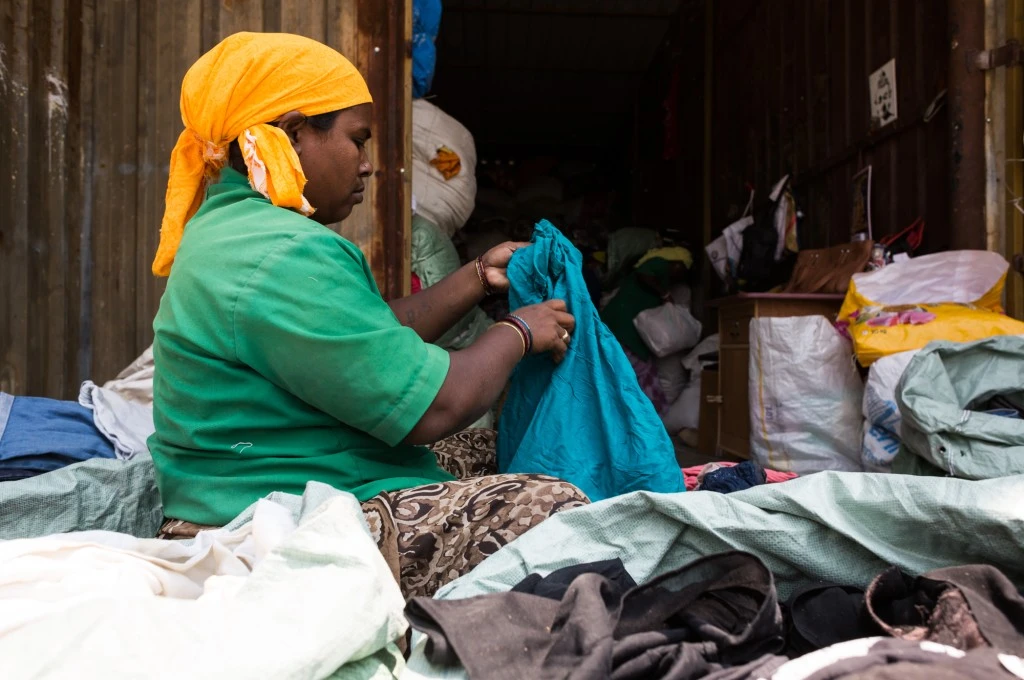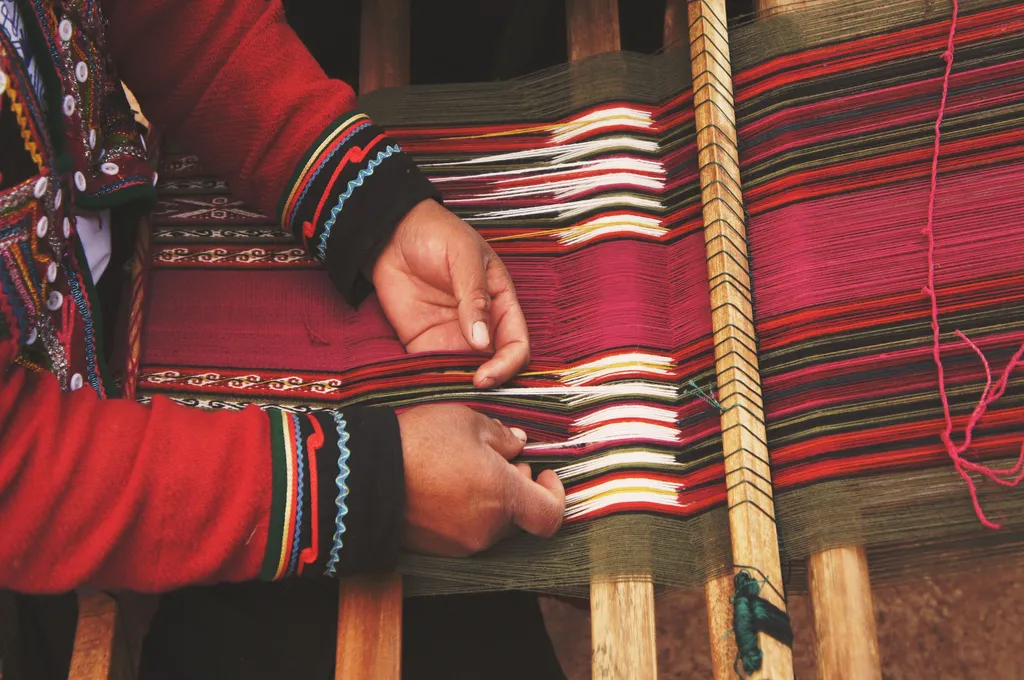This page was last updated at 11 AM on June 10th, 2021.
As we find ourselves in the midst of a second wave of COVID-19 and our sector comes together to support those most in need, we at IDR want to ensure that you have access to the most relevant information. To that end, we will bring you the latest insights on COVID-19 that are relevant to the social sector.
We are also compiling a repository of asks from organisations and collectives that are fighting COVID-19. We will amplify these asks across our social media handles. If your organisation needs support as you respond to this second wave, please tell us about it by filling out this form.
And to share any relevant news and updates that you think would be valuable for your peers and the sector at large, you can writetous@idronline.org or reach us on our social media handles: Facebook, Instagram, LinkedIn, and Twitter.

- IDR has compiled a list of social sector organisations and collectives that are engaged in fighting COVID-19 across India. It is updated daily, with the information provided by the organisations themselves. Check out the full list here.
- The team at Agami has put together a Rural Response Tracker which aggregates initiatives in rural India that are responding to COVID-19. To support these efforts, check out the list here.

The latest updates on COVID-19 that are relevant to the social sector in India.
June 8
An Adivasi village reverses the vaccine hesitancy trend
In Maharashtra’s Melghat region, doctors at the local primary health centres are successfully using audio-visual messages in the local language, Korku, to reinforce messaging on vaccination against COVID-19. Consuming the information in Korku and hearing it from one of their own has helped in allaying the mistrust in the public health system among Adivasis in Melghat. These efforts are crucial given the disproportionately low vaccine coverage in Adivasi-dominated areas and the higher risk that indigenous communities face due to socio-economic marginalisation and lack of access to health and social services.
Health experts report that the unprecedented rate of vaccine hesitancy in rural and Adivasi hamlets stems from unclear messaging about the vaccine, misinformation, and logistical delays. A one-size fits all campaign will not suffice to build credibility among traditionally vaccine-hesitant communities. Melghat’s success shows us that culturally-relevant advocacy and mobilisation are key to battling vaccine hesitancy.
June 8
COVID-19 relief for communities left behind by mainstream efforts
Responding to the devastation caused by the second wave of COVID-19, small grassroots-level initiatives have stepped in with relief measures for communities that the state and larger nonprofits have not been able to reach. Given their hyperlocal focus, they are better able to understand and respond to the needs of the families on a timely basis: supplying ration, cylinders, medical equipment, direct cash transfers, and providing COVID-19 awareness information in local languages.
However, since most of the media attention has focused on mainstream efforts, these initiatives have found it hard to raise funds and have had to rely largely on internal networks.
June 2
India’s vaccination drive is leaving women behind
An analysis of official data reveals a gender gap in India’s vaccination drive. Except for Himachal Pradesh, Chhattisgarh, and Kerala, all other states have vaccinated more men than women. India first started vaccinating healthcare and frontline workers on January 16th, 2021 and due to a higher proportion of women in these fields, more women were vaccinated compared to men in this phase. However, since January 31st, the share of women being vaccinated has been shrinking. Women form a smaller proportion than men in India’s adult population on account of a male-biased sex ratio at birth. Despite accounting for this skewed sex ratio, the gap between the share of adult men and women who have been vaccinated has systematically widened and is at its widest yet.
While there is no clarity on the reasons behind the gender gap, government officials have reported greater difficulty in contacting women and have noticed greater vaccine hesitancy among them. Another reason could be the lack of access to the internet and limited tech know-how among women, putting them at a disadvantage when it comes to using a technology-first system for vaccination.
June 1
No savings, no jobs, and no food for migrant workers
Migrant workers, who are still recovering from the impact of the national lockdown in 2020, have been hit even harder by the second wave of COVID-19. Unlike during the first wave, no targeted relief efforts—special trains, cash transfers, and provisions—have been made for them even as they face fewer jobs, depleted savings, and hunger.
Food insecurity is a growing problem, with migrant workers scrambling to buy basic food essentials. Requiring public distribution system cards (PDS) or ration cards to access provisions will only exacerbate this. To mitigate some of the effects of this impending crisis, we need to universalise access to the PDS and provide a wage compensation of INR 7,000 per month for the next few months.
May 31
Protecting children orphaned by the second wave of COVID-19
With over 3,00,000 deaths—many under the age of 50—reported so far, thousands of children across India have lost both parents to the pandemic. With no time to even grieve, children are being pushed into child marriages or put to work. Further, many children don’t have government identification documents yet, effectively cutting them off from assistance schemes. Family and kinship networks have stepped in, but require assistance to provide long-term support.
Raising awareness to protect children (especially those from marginalised communities) from illegal adoption and trafficking, providing assistance to families, ensuring access to social protection programmes, and involving the affected children in the decision making process are crucial to ensuring that no child is left behind.
May 26
Migrants from Muzaffarpur find themselves with no work
Muzaffarpur—a primarily rural district in Bihar that relies heavily on agriculture—sends thousands of labourers to other states for work. For people from this flood-prone district, work in other states acted as a safety net in the face of uncertainties on the agricultural front. However, due to the COVID-19 surge and state-imposed lockdowns, residents now find themselves in their villages, with scant work and significantly reduced earnings.
Further, the villagers prefer not to avail jobs under the Mahatma Gandhi National Rural Employment scheme due to allegations of delayed payments and corruption. This has left communities scrambling to meet basic needs such as food and rations.
May 24
A mounting debt crisis in the wake of COVID-19
After the 2020 COVID-19 lockdown, the household-debt-to-GDP ratio soared to 37.1 percent, according to data from the Reserve Bank of India. The devastating economic impact has been compounded by the lack of institutional access to credit and income support and increased borrowing to save for future uncertainties and cover essential needs. Borrowing was primarily to run households and cover rising medical costs in the absence of public healthcare.
Further, lack of access to formal credit lines has forced families to borrow from riskier informal sources. Creating better access to formal credit, providing income support, and incorporating tech-based financing options are immediate measures needed to weather the impact of this mounting debt crisis.
May 18
Rebuild people’s trust in public systems
Without adequate testing and healthcare facilities, rural India is grappling with the second wave of COVID-19. Experts believe that rebuilding people’s trust in public systems, encouraging home care, and using simple technology could contain this surge.
Every MP and MLA must ensure that their constituency has testing facilities, the local administration must engage with the communities and motivate frontline staff, and Panchayats must encourage social distancing and other COVID-appropriate behaviour.
Stigma associated with COVID-19 leading to death by suicide
Fear and stigma associated with COVID-19 infection is leading to social boycott of patients in some rural areas. Along with being ostracised, many patients are also struggling with monetary aid for medicines and treatment. The resulting distress has led to some cases of death by suicide .
The rise in stigma associated with COVID-19 must be tackled through awareness campaigns.
May 13
COVID-19 is rippling through Indian prisons
The second wave of COVID-19 has hit Indian prisons hard, with more than 2,800 inmates already infected.
Recognising this, the Supreme Court has ordered state authorities to limit arrests and decongest prisons. Bottlenecks such as limited functioning of courts, procedural hurdles, and arrests during the lockdown have resulted in the continued overcrowding of prisons. Dismal sanitation conditions and medical facilities in isolation centres within prisons make it unlikely that prisoners will receive adequate care. Further, the shortage of medical professionals and lack of clear vaccination plans will only exacerbate the impact of COVID-19.
May 12
More than 40 percent of India’s districts report positivity rates higher than the national average
As many as 533 of India’s 718 districts are reporting COVID-19 test positivity rates that are higher than 10 percent.
In light of this surge, experts recommend significantly ramping up the number of Rapid Antigen Tests—which are easier to administer and provide quicker results—to enable early detection and isolation in order to break the chain of transmission. Other suggestions include setting up 24×7 testing booths in cities, towns, villages, educational institutions, and public spaces. The Ministry of Health and Family Welfare has asked states to enact strict containment measures in districts with positivity rates higher than 10 percent.
As of May 12th, 2021, six states and three union territories reported alarming positivity rates—higher than 25 percent.
May 10
Uttar Pradesh district has an active COVID-19 caseload that is thrice last year’s peak
The second wave of COVID-19 has begun to engulf rural India, with districts like Saharanpur in Uttar Pradesh facing a caseload that is several times higher than last year’s peak. Over the past year, no improvements to public healthcare—which is virtually nonexistent in Saharanpur’s villages—were made.
In the village of Bargaon, the Primary Health Centre is shut, the nearest Community Health Centre has not been declared a COVID-19 centre and is out of vaccines. Bigger towns are several kilometres away, and so villagers are flocking to the local clinic that is open but ill-equipped to respond to the flood of patients. The medicines prescribed by the doctor in service are either being sold at inflated prices or are unavailable at local medical stores.
Further, the acute vaccine shortage has resulted in a drastic drop in the number of doses being administered.
May 07
Rural citizens struggle to access vaccines
Angered and frustrated by the acute shortage of vaccines in rural Maharashtra, local senior citizens are speaking out against people from urban areas travelling to villages to get vaccinated. Officials state that with online registration now open for people aged 18-44, those who are unable to find slots in urban areas are travelling to rural areas to get their shots. With most senior citizens still waiting to get their second dose, and the mounting shortage of oxygen and medical supplies, this pattern doesn’t bode well for citizens in rural areas.
May 05
Economic fallout of the second wave likely to be more severe
The second wave of COVID-19 has reached India’s hinterland, with the share of cases in rural India on the rise. Lack of quality testing facilities and healthcare infrastructure combined with a largely high risk, older population could result in mayhem as the disease spreads. With steady consumption levels, rural India was able to reign in the economic impact of the first wave. However, rising fear and spread might make it difficult to sell produce and services, limiting income streams and worsening the economic impact.
Experts also note that the impact on rural India–the humanitarian crisis, loss of incomes, and resultant debt traps–will not be captured in GDP figures immediately. Acute stress on resources, without a stimulus package from the government, will make it harder for rural India to sustain the economic shock and further stunt recovery.
May 04
Delays in distributing emergency COVID-19 supplies
Emergency COVID-19 relief supplies—oxygen concentrators, cylinders, and medicines—received from various countries landed in Delhi by April 30th, 2021. However, state officials from seven states reported that they hadn’t received any supplies nor had any information about their allotment from the Centre until May 3rd.
Referrals and resulting queries made to the health ministry went unanswered. An anonymous source reported that the Indian Red Cross Society (IRCS) that handles clearance, doesn’t have adequate personnel to carry out such a large-scale relief operation and that bottlenecks in the customs clearing process, despite a waiver on duties, was holding up aid clearance. Given the acute shortage and dire need of these supplies, timely allocation could save lives.
May 04
Central government wants nonprofits to help; FCRA doesn’t allow them to
As the healthcare crisis caused by the second wave of COVID-19 in India deepens, Prime Minister Narendra Modi has asked government officials to explore how volunteers from civil society can support its response.
This move is in stark contrast to the draconian restrictions imposed by the central government on nonprofits via the amendment it made in September 2020 to the Foreign Contribution Regulation Act (FCRA). This Act, which regulates the inflow of foreign donations or aid to India, is now inhibiting the flow of crucial funds to smaller nonprofits, preventing them from providing support to communities who need it most. Read this article by Sruthisagar Yamunan to understand how the government’s attitude towards nonprofits is impeding their work during this crisis.
April 28
The government must ensure the protection of lives and livelihoods for migrants
Migrants who returned to their villages during the first lockdown, and were self-employed, engaged in agriculture, or working on MGNREGA schemes, experienced a drop in income of almost 86 percent. This led them back to the cities in search of work when urban India opened up late last year. The new lockdowns have threatened their livelihoods once again.
To ensure protection of livelihoods and lives of these migrants, the government should provide subsidised food grains at places of work where the migrants have returned in search of employment. It should also consider extending financial assistance under the Pradhan Mantri Garib Kalyan Yojana to ensure they remain in the cities.
Read this article by Ashoka Gulati and B B Singh to understand the financial impact of lockdowns on migrant workers and their families, and what governments can do to protect them.
April 25
The health infrastructure in Odisha’s Nuapada district is under severe strain. It has seen a COVID test positivity rate of nearly 40 percent in the last week, 42 deaths in the Nuapada COVID-19 hospital since April 8th, 2021, and 2,584 active cases. This ground report by Satyasundar Barik highlights that while the virus is creating visible havoc in urban India, in rural parts of the country like Nuapada, the situation might be just as grave.
April 25
Centre issues guidelines ahead of Phase III of vaccination
The health ministry has issued guidelines for states and union territories on the implementation of the third phase of the COVID-19 vaccination drive which allow all citizens above 18 years of age to get vaccinated.
According to the letter, vaccine types and their prices will be displayed in the ‘Appointments’ module on the CoWin platform, allowing citizens to make an informed choice. All vaccination slots at private COVID vaccination centres will be offered only through online appointments on CoWin or Arogya Setu. Onsite registration or appointments will be permitted only if there are doses left in the last opened vials to minimise vaccine wastage.

Lessons for nonprofits from COVID-19
by Stuti Shukla, Rukmini Banerjee
Over a year has passed since the COVID-19 crisis began, and there has been much discussion about resilience: how organisations cope with challenges and threats during a crisis, and then adapt and transform themselves to survive. Like many other organisations, Pratham Education Foundation also had to revisit their purpose, strategy, and activities. This article describes six key factors that helped them adapt to the crisis.
Community-centric communication
by Vanessa D’Souza
The need to provide clear information from a trusted source to people living in urban low-income communities has become a key factor in saving lives. This article outlines five steps that will help you do this.
A pandemic, an infodemic, and the fear of vaccination
by Shreya Chaturvedi
As we make our way through a mass vaccination campaign, it is helpful to understand strategies that have worked with similar campaigns in the past. Learn about the power that peers, friends, and family have when it comes to impacting behaviour change decisions.
Mental health and COVID-19 in India
by Madhumitha Balaji, Vikram Patel
To fully realise the mental health crisis that India faces in relation to COVID-19, one has to begin with recognising the severity of the situation that existed before the pandemic. This article breaks down what we know so far and where we go from here.
Making virtual volunteering work
by Aarti Madhusudan, Shalabh Sahai
This article talks about what corporates and nonprofits can do to make employee engagement effective during COVID-19.





